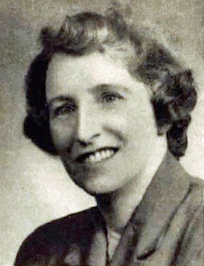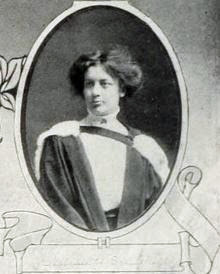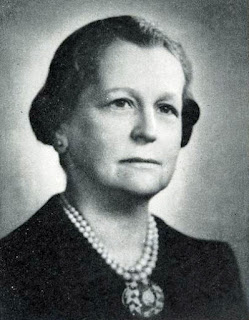Project Progress: A Study of Canadian Public Libraries. Prepared for the Canadian Library Association and its division the Canadian Association of Public Libraries by Urban Dimensions Group Inc. Toronto, Canada. Ottawa: Canadian Library Association, January 1981. 120 p., ill. Issued in French as: Projet progrès.
My review first appeared with shorter text in Canadian Public Administration vol. 26, no. 2 (June 1983): 315-316 as follows.
. . . . .
In 1979 the Toronto-based Urban Dimensions Group Inc. was commissioned by the Canadian Library Association to study problems confronting public libraries in Canada. The group’s report, Project Progress, identifies a number of issues affecting libraries in a national context, and offers practical data as well as recommendations to respond to these challenges. Implicit in this survey is a muted call to action. Yet, in the introduction, the CLA Steering Committee members offer a guarded forecast: “the future is before us.”
There are good reasons to be wary. Consider a few results from the 1979/80 general survey of libraries presented in chapter three:
51.8 per cent of service points are open less than 20 hours a week
38.4 per cent of service points circulate less than 50,000 items per year
89.3 per cent of service points lent less than 250 books a year to other libraries
64.3 per cent of service points operate on less than $50,000 annually
77.1 per cent of libraries employ no full-time qualified public service librarians
94.6 per cent of libraries employ no full-time qualified librarians in technical services
84.0 per cent of libraries employ no administrative or “other” librarians
46.0 per cent of service points are less than 1,000 sq. ft. in size
41.3 per cent of service points hold less than 10,000 volumes
19.0 per cent of service points have no catalogue access to their collections
32.0 per cent of service points offer children’s programs/story hours
Is this progress? It is disquieting to learn that eighty years after the introduction of children’s programming in Canada less than one-third of our libraries provide story hours. Why? The members of the research team pass over this - and other alarming findings – without much discussion. Perhaps their own doubts about the potential for corrective measures are too firmly established to give palliative comments.
The bleak statistics in Project Progress lead up to a discussion of library cooperation and cost-benefit analysis at the end of chapter three. Project Progress rightfully notes that the existing volume of inter-loan traffic is low, that present national bibliographic information services are “unwieldy,” and that only “little growth or innovation” has occurred since 1972. Given some of the results of the survey above, it is doubtful whether cooperative efforts at resource-sharing will become a widespread activity outside larger urban and suburban communities.
Chapters four and six analyze the education, utilization, training and attitudes of library workers. Project Progress reports that the unionization of libraries is viewed by workers as having little impact. Indeed, the issue of professional status of librarians in relation to management has not been addressed adequately. Project Progress also identifies a possible weakness in library education concerning use of technology to improve services. No doubt library educators will disagree on this issue.
Two further chapters study usage of libraries by the public which incorporate some results appearing in previous surveys made by the federal government in 1975 and 1978. It is noteworthy that a full century after the introduction of free tax-based library services, the question, “Would you favour taxes being increased to cover necessary costs?’ instead of cutbacks, elicits a negative reply from 45 per cent of the respondents (2 per cent greater than those favouring tax increases). Little wonder Project Progress recommends a more explicit market orientation and effective performance measures to support budget requests! Further, it is revealed that people believe libraries are more important to the community (61.5 per cent) than they are personally (42 per cent). The irony is that most professional librarians and staff would agree that they exist to serve the needs of individual users, not communities. Thus it is no surprise that the 1981 Ontario Library Association conference theme was “Libraries Celebrate the Individual.”
Project Progress is the most important single document on public libraries to appear since Libraries in Canada; A Study of Library Conditions and Needs, the report of an inquiry chaired by John Ridington in 1933. In my view, most recommendations offer a sensible basis for further study and action. Nevertheless, there is an essential ingredient missing. Nowhere in Project Progress is there any serious analysis of the political process engulfing public libraries. Although all levels of government formulate policies, the financial realities impinging upon the majority of local municipal units limits the scope for leadership and innovation. The major policy actors – library trustees, librarians, school boards, councillors, interest groups such as library associations, and provincial civil servants – are largely concerned with administrative/internal decisions. In this milieu, political policy-making languishes. An opportunity has been missed to explore the political world of public libraries where detailed administrative expertise is the road to advancement for librarians, and where trustees (and their libraries) suffer low visibility. Because the by-word for action in the fragmented library community is unity, changes are exceedingly difficult to achieve.
Project Progress does close with the conviction that improvements can be implemented by good planning, basically through national or provincial agencies such as CLA. This is a step forward in raising political awareness. Fifty years ago the Ridington report sincerely believed that there was “nothing the national government can do” to create and maintain a national library at Ottawa. Clearly since then public libraries have come to recognize that meaningful rewards can be attained through moderate political action. But constructive changes continue to follow a sporadic course, because little is known about the political environment of libraries.
. . . . .
Postscript 2023
In the mid-1970s, the Canadian Association of Public Libraries decided to conduct a study to ascertain the public library’s effectiveness and provide future recommendations. Unfortunately, this ambitious undertaking eventually raised less than half of the original projected financial goal after five years. CAPL, a small 1,000 plus member section of the Canadian Library Association, hoped a national study would boost decision-making, serve as a basic footprint for planning, and stimulate librarians/libraries to focus on changing societal conditions (especially the importance of information provision). The first three chapters centred on a brief introduction, an explanation of the data and methods, and a description of public library activity. Urban Dimensions examined 1,178 completed library questionnaires from 2,426 service points, conducted 90 personal interviews of library workers from 51 libraries, interviewed 200 people from the general public by telephone, and met with 18 decision-makers. The report concluded with twelve general recommendations, some of which did not appear to come from the data presented in tables and graphs.
The information presented was
fairly general and the findings, which blurred the distinction between a
library as an organization and the totality of service points. As a result, there was some discouraging reporting on the availability of library services. The report was released at the CLA national conference in Hamilton in June 1981 with some fanfare that future discussions about its recommendations would lead to new directions. However, this
prospect did not materialize. A year later, at Saskatoon in 1982,
CLA’s sessions on the report made little headway because conference-goers disagreed with some findings, such as the recommendation
for professional librarians to form a national body equivalent to a
licensing body. Many administrators surmised that the implementation of
major recommendations would necessitate local initiatives which might
vary across the country. The development of national strategies in a diverse
public library community required financial resources that CLA, public libraries, related firms, and foundations were unable to provide. In retrospect, Project Progress was a valiant attempt to assess current strengths and weaknesses and offer guidance for future action; however, the report relied on subsequent activity at the community level and coordinated national leadership which CLA and leading library associations were not able to undertake.
Three additional important reviews:
Jean Tague and Sam D. Neill, “A Critical Review of Project Progress,” Ontario Library Review 66 no. 2 (June 1982): 84-87.
Katherine H. Packer, compiler, “Project Progress: A Review,” Canadian Library Journal 39 no. 3 (June 1982): 129-133; with a “Reply to the Review” by the researchers, E. B. Harvey, Lorna Marsden, and Anne Woodsworth, 135-137.
S.D. Neill, “Project Progress and Professional Library Education – Continuing Education, Management Skills, Management Statistics,” OLA Expression 3 no. 4 (Winter 1982): 19-21.




